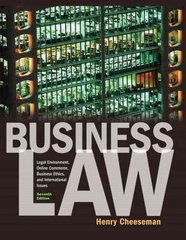Microeconomic questions are asked below, provide solutions for these
(a) In the following pair of games, check whether the players' preferences over lotteries on the strategy profiles are identical (i.e. row player's preferences on the left to the row player's preferences on the right and column player's preferences on the left to the column player's preferences on the right). L M R L M R 2.-2 1,1 -3,7 12,-1 | 5,0 -3.2 1,10 0,4 0,4 5.3 3,1 3.1 -2,1 1,7 -1,-5 -1,0 5,2 1,-2 (b) Under Postulates P1-5 of Savage, let D1, D2,...; D, be disjoint non-null events such that Di~Dy...~Dn, where > and ~ are the at least as likely as and as likely as relations between events, derived from betting preferences as in the class. Given any subsets N and N' of {1, 2. .... n}, show that UD.= UD. - IN1 2 IN'I. iEN iEN' 3. Bergson becomes a benevolent dictator. He has n subjects i = 1, ... .n with CARA utilities u1.-.., un, respectively. (Write a, for the absolute risk aversion of i.) The total wealth in the society, Y, is a function of an unknown state w and is normally distributed with mean / and variance o'. Bergson can choose any allocation a = (21, ...,2, ) such that an (w) + ... +2, (w) & In(Is+4). *=1 where , 6 6 (0, 1). She gets return of r > I from her savings so that her wealth at t + 1 is with = " (ut - 21) if her wealth at t is no, and she consumes r, at t. (b) Find a sophisticated-optimal consumption strategy for her in which the self at any given date s consumes yu,. Compute the constant y and briefly verify that this is indeed a subgame-perfect equilibrium of the multi-agent game. (c) For 8 0. With some probability # 6 (0, 1) she may get sick, in which case she would need to spend L dollars on her health. There is a health-insurance policy that fully covers her health care expenses in case of sickness and costs P to her. (If she buys the policy, she needs to pay P regardless of whether she gets sick.) (a) Find the set of prices P that she is willing to pay for the policy. How does the maximum price P she is willing to pay varies with the parameters M. L. o, and a? (b) Suppose now that there is a test te {-1, + 1} that she can take before she makes her decision on buying the insurance policy. If she takes the test and the test t is positive, her posterior probability of getting sick jumps to * * > * and if the test is negative, then her posterior probability of getting sick becomes 0. What is the maximum price c she is willing to pay in order to take the test? Take P " (E) >0 > > > u (D). Find the condition under which she takes the test. (b) (4 minutes) Calculate consumer and producer surplus under trade. (5) (15 minutes) The US government is unhappy with steel imports and decides to impose a 200 percent tariff on imported steel so that the price of imported steel is now 3 when importing from abroad. (Continue to assume that the US domestic steel market operates in perfect competition with production function S(L) = ;1) (a) (2 minutes) What is the price of domestic steel? Will car manufacturers choose to use domestic or foreign steel? (b) (5 minutes) Calculate the new equilibrium in the US market for cars, continuing to assume that cars are traded freely at a world price of 100. Does the US still export cars








